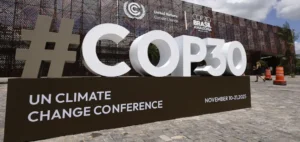The Indonesian energy sector has long relied on coal as the primary energy source, and this is not likely to change anytime soon. According to a recent report, the country, which had committed to reducing its greenhouse gas (GHG) emissions, is seeing its promises seriously compromised by this persistent dependence on coal. Despite Indonesia’s adherence to global decarbonization goals under the Paris Agreement, the increase in its coal-based electricity generation capacity seems to contradict these commitments.
Continued Growth in Coal-Based Power Generation Capacity
Coal-based electricity generation in Indonesia has seen significant growth in recent decades. In 2022, the installed coal capacity reached nearly 35 gigawatts, accounting for more than 60% of the country’s total capacity. This reliance on coal is largely driven by the relatively low costs of this energy source, which remains competitive compared to other forms of electricity generation, particularly renewables.
Despite growing awareness of coal’s negative environmental effects, the transition to cleaner energy sources proves complex for the country. Indonesia has been slow to develop sustainable alternatives, and the renewable energy infrastructure remains insufficient to replace coal in the short term.
Contradictions Between Climate Commitments and Coal Investments
Indonesia ratified the Paris Agreement in 2016 and pledged to reduce its greenhouse gas emissions by 29% by 2030 compared to 2010 levels. Yet, investments in new coal power plants continue to flow in. Between 2020 and 2023, several coal power plant expansion projects were launched, supported by both national and international financing. This strategy, based on increasing coal capacity, raises questions about the credibility of the country’s decarbonization commitments.
The Indonesian government justifies these choices by citing the growing energy needs of the population, which is expected to reach over 270 million people by 2030. However, some experts argue that this approach lacks long-term vision, highlighting that the environmental and health costs of coal could weigh heavily on the national economy in the years to come.
Financial and Economic Stakes Behind This Energy Strategy
Coal, despite being highly polluting, remains a relatively cheap energy source for Indonesia. The investment costs in coal-based power generation infrastructure are lower than those for renewables, which explains why many investors, including international players, continue to fund these projects. Additionally, coal exports remain a significant source of income for the Indonesian economy, as the country is one of the largest global coal exporters.
Indonesian authorities assert that a transition to renewable energy is underway, but that it requires time and considerable resources. However, given the economic and social pressures related to providing affordable energy, balancing economic development with emission reductions appears challenging.
Implications for Future Climate Commitments
Experts stress that Indonesia’s energy trajectory could have long-term consequences for its climate commitments. If the current trend continues, the country will find it difficult to meet its climate targets without increasing investments in renewable energy and adopting stricter energy transition policies.
The challenge for Indonesia will be finding a way to reduce its coal dependency while meeting the growing energy needs of its population and preserving the competitiveness of its economic sector. This dilemma, shared by many developing countries, demonstrates that energy choices are closely linked to economic and social realities, making climate commitments even harder to achieve.






















